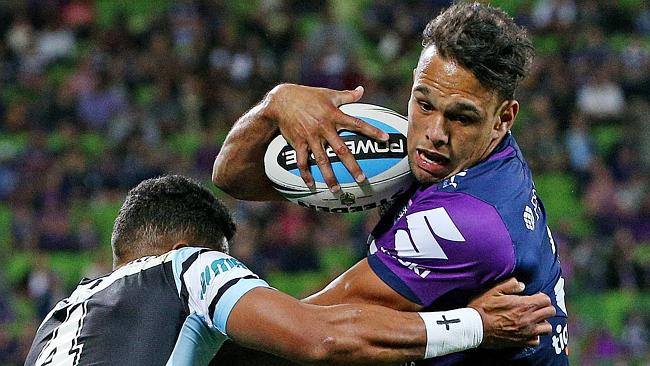
Whether you call them perpetual up-and-comers or just plain underrated, there are some NRL players who never quite make it into the centre of the spotlight, despite being as talented and prolific as the most prestigious footy celebrities out there. Will Chambers is one of those players. From the fact that he wasn’t awarded Man of the Match in Origin 1 this year to the way that he still seems to be classified a tier below Smith, Slater and Cronk, there’s something about Chambers that seems to elude the kind of star image that so many other players fall into, even or especially when they’re not aiming for it. It’s all the more unusual in that Chambers was arguably the key player in the Maroons lineup this year. After the shock loss to the Blues in 2014, Queensland needed a new ingredient, a fresh voice to reassert their legacy and longevity. Conventional wisdom would have it that the return of Cronk was what assured the Maroons Game III of last year’s season, as well as a return to form this year. But Game III 2014 was also when Chambers took over the helm at centre, pairing up with Darius Boyd for the duo that’s arguably defined this year’s Maroons vision, outdoing the various halves combos of Thurston, Cronk, DCE and Gagai in the sleek synergy that they’ve brought to a renewed QLD outfit.
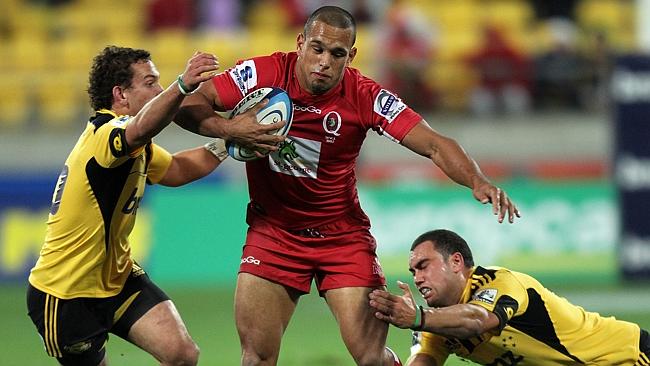
I’ve written in an earlier post about the way that Boyd’s move to the centre has completed his growth over the last couple of years, but there’s also something to be said for the way in which Chambers has backed him up at centre as well. In part, that’s because there’s something of a connection between the two players in terms of their histories, movements and team affiliations. Both started out with a powerhouse outfit and both have returned to that team in the last couple of years to renew and restore it. While the Storm certainly weren’t floundering, their two premierships – or legitimate premierships – have been bookended by Chambers’ last year at the club in 2007 and his first year back with the club in 2008, while Boyd’s move to the Broncos has had a lot to do with Brisbane’s Grand Final aspirations and ambitions this year as well. Similarly, both players have wandered a bit in the interim, with Chambers putting in a fairly middling couple of years with the Queensland Reds, which presumably motivated him to get back to his roots, despite a very impressive demonstration season for Munster that guaranteed him a contract had he chosen to make the move to Ireland. Similarly, Boyd never felt as if he was really playing for St George Illawarra or Newcastle so much as just passing time before he could find his footy voice again and reconnect with the spirit he brought to Brisbane back in those early days of his career.
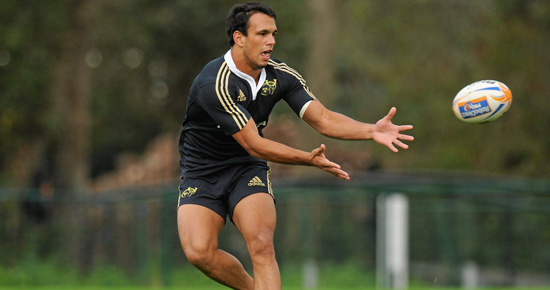
At the same time, Chambers’ homecoming also has a bit of a different flavour to Boyd’s. For the troubled Broncos fullback, coming back to Brisbane was a key step in regaining his mental health, not least because Wayne Bennett seems to have provided him with something of a mentor and father-figure over the last decade. For my money, Boyd is now finally going to become what he always was – a one-team player – and settle into Suncorp and his game with the conviction that comes from having taking a roundabout route to realise where you wanted to be. Chambers, on the other hand, is different. While he’s an integral part of the Storm, it still feels as if he has a Union career to explore as well, something he’s speculated about in recent interviews.
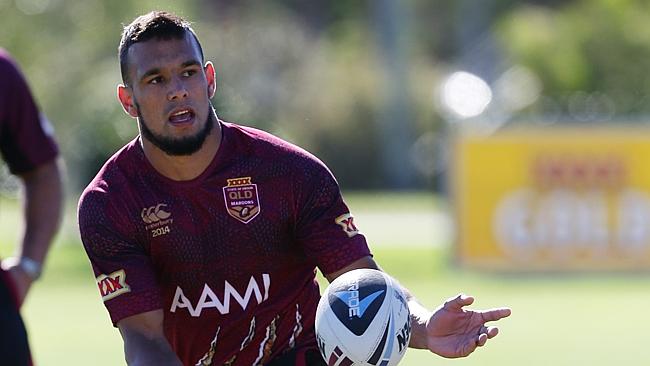
And you can see it in the way that he’s made the centre-wing zone his own. Even more than Boyd and Jennings, Chambers may be the premium centre in the game at the moment, if only because he recognises that being a good centre means taking command of that entire middle tier and being able to move in and out of the wing where possible, as well as being able to play on the wing when required as well. While Origin provided Chambers with an opportunity to showcase that ability, it ultimately reflects his contribution to the Reds at outside centre, one of the most fluid positions in Union, as well as a position that’s uniquely attuned to the more mobile contestation procedures of Union. In fact, you could almost say that Chambers has been operating at the outside centre for both the Maroons and the Storm ever since his return to League. As Union players have sought to diversify their portfolios in the last decade, outside centre has become one of the most agile, flexible, mutable positions, as well as one of the hardest to fill. By bringing it into the realm of Rugby League, Chambers has arguably just taken that mutability to its logical conclusion, finding a way to maintain his outside centre command while playing outside the code as well.
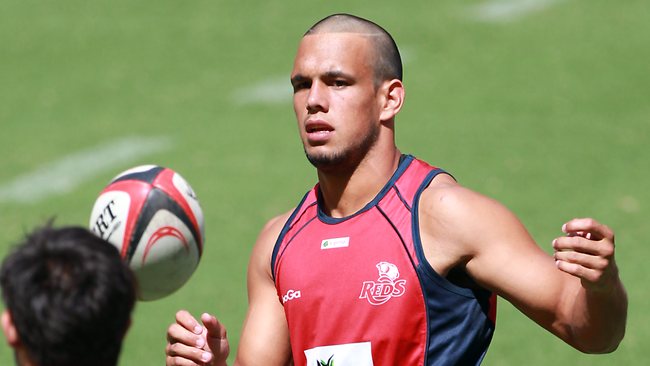
Add to that the fact that Chambers started his career as a devoted AFL supporter – first the Crows, then the Hawks – and it feels as if he can’t or won’t allow League to hold him for very long. That’s not to say that he’s treated the NRL like a holding pen either, but that what we’re dealing with is a kind of composite talent who can only progress further towards his final sporting personality by borrowing a bit from each experience along the way. Sure, the Reds may not have worked out for Chambers, but that time on the outside centre has been indispensable in paving the way for his current reign with the Maroons and the Storm, which in turn feels like yet another step along the road towards a sporting achievement that may or may not lie outside the NRL. All that begs the interesting question of whether Chambers will finally sink into one groove, or whether he’ll just keep on getting better and better across a variety of different codes and experiences. My money is on the latter, which is perhaps what finally distinguishes him from Smith, Slater and Cronk, all players who have spent years and years perfecting a single sporting identity. Other players have been integral to their rapport – such as Inglis and Folau – but none have stuck in the same place for as long as these three Maroons-Melbourne stalwarts, to the extent that their trajectory often seems to be the only one, or at least the best one.
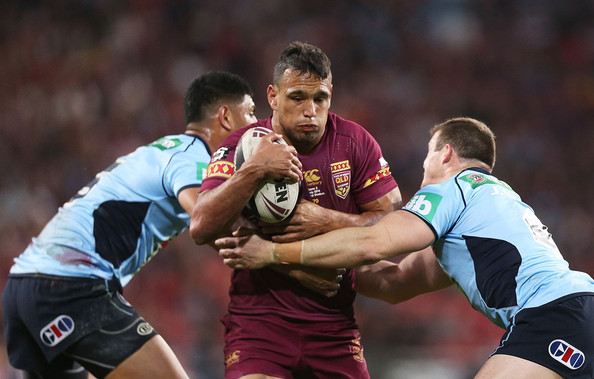
But players like Chambers show there’s another way – a middle-ground between one-team players and unreliable players. While Chambers has moved around a lot, it doesn’t seem motivated by anything other than a desire to improve his game. Like artists who experiment with a whole range of media only to realise in retrospect that that very experimentation was what constituted their genius, so Chambers may be remembered as a player who took chances and still managed to find a way to improve his sporting ability with each chance. And not lugubrious, oversaturated, overpublicised chances along the lines of Hayne, Folau or SBW, but the chances peculiar to a player whose skill set is a bit too eccentric, restless or just plain curious to fit in with any code or team for too long. I’ve got a bit more to write on code-jumping in another piece, but it suffices to say here that Hayne, Folau and SBW all seem to believe in the theoretical possibility of a code that could satisfy their ambitions – it’s just a matter of finding it. If reports from the Eels stables are anything to go by, it’s been clear for some time that Hayne would only be prepared to thrive in the NFL, while SBW’s time with the Roosters never felt like anything than a regathering of forces, rather than a genuine consideration of League as a viable future. Even Folau’s intense indecision has gained a lot of its media traction by the widespread perception that there was some code of football out there somewhere that was inextricably, intrinsically and indisputably aligned with his talents.
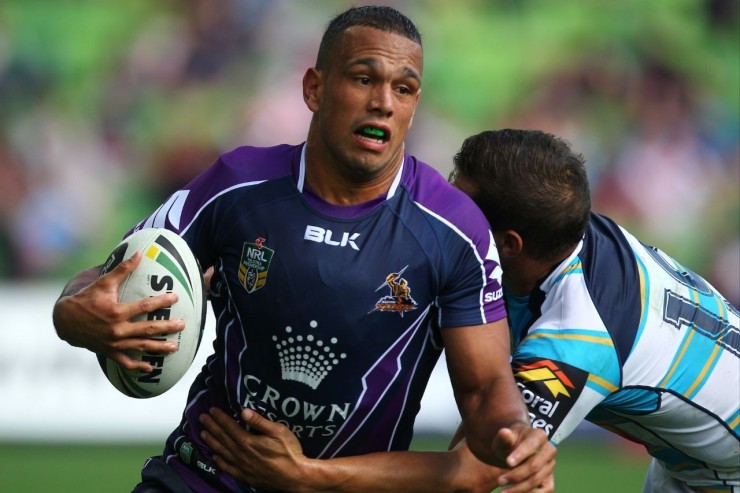
With Chambers, though, that fantasy somehow fails to register. Whether because he’s less media-savvy, less extroverted in his indecision or more eccentric in his game, I’ve never sensed that there was one code that could satisfy all of his talents at any one time. Watching him is like being taken through a game that doesn’t quite exist yet but that lies somewhere between Union, League and – in his kicking and running game – AFL, which makes him quite unique on the field, and one of the most dynamic and fascinating players in Origin in particular, where he is undoubtedly as integral to the Maroons’ success as Smith, Slater and Cronk, even if his talents tend to be less rewarded. Sure, he may have signed with the Storm until 2017, while it’s still possible that he may see out the rest of his career with Melbourne, but even so it feels as if he’s playing a different game from the rest of the team. In that sense, he may actually be the key Storm player, since Melbourne’s promotional strategy has tended to emphasise them as a team set apart from the rest of the NRL, aspiring to both the high chic of Union but also the AFL demographic that they’ve managed to partly seduce over the course of their twenty-year existence. If the Storm are a team that present themselves as somehow outside the regular constrictions of Rugby League, then it’s really Chambers who should be their figurehead, especially since he was on the verge of becoming part of the Smith-Slater-Cronk triumvirate – and turning it into a quartet – before he headed off for the Reds.
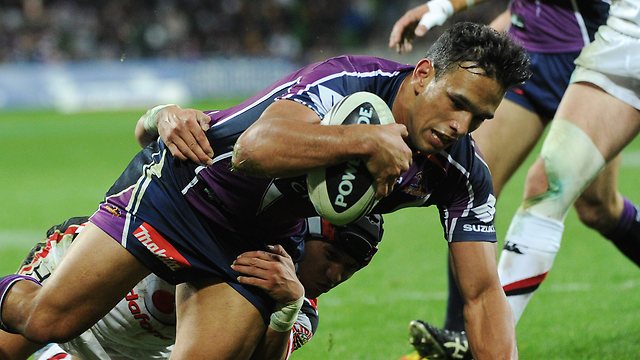
And yet it feels in the spirit of Chambers’ game that he hasn’t fallen into that figurehead role as well, since what we’re dealing with here is a distinctly anti-heroic player, someone who manages to put in innovative game after innovative game without needing to be flashy about it. When he plays Union, he plays like a League player, but when he plays League, he plays like a Union player, and there are times when I wonder if Chambers’ ultimate game would be some generalised Rugby that doesn’t take into account the distinctions between League and Union – Rugby as it was first played before it split off into two codes. Perhaps that’s the appeal of AFL to him too, since Aussie Rules has never subdivided in the same way as Rugby, and has even managed to retain the same single competition, despite scission between the VFL, SANFL and WAFL in the late 1970s. Where players like Sonny Bill and Folau have moved into Union as a kind of heroic transition, Chambers never quite achieved that level of gravitas, sitting out the 2011 Super 15 Final on the Reds bench while Sonny Bill put in one of his best performances for the Crusaders on the other side.
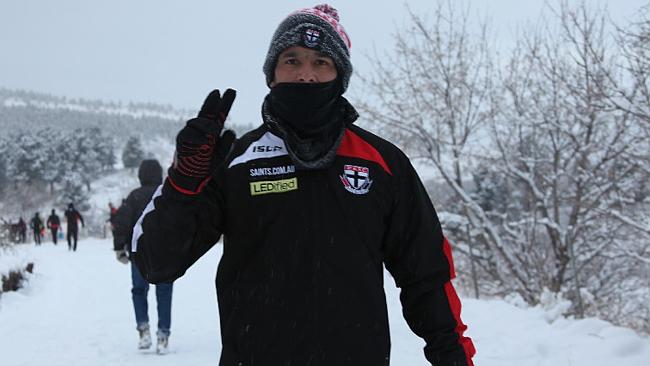
But that inability or unwilligness to treat each code switch or game change as a heroic achievement is what I like about Chambers as well. If SBW, Folau and Hayne are the ultimate cross-code players, then Chambers is something closer to a syncretic player, a player who feels more like a picaresque summary of every football code he’s touched, watched or played, rather than a heroic embodiment of one code in particular. In 2013, Chambers travelled to the United States with St. Kilda to train at a high-altitude facility in the Rocky Mountains. While he was there, he also did some work at Colorado University’s Bubble Centre, an elite NFL facility, where he actually met with the Denver Broncos to discuss how American football tactics might translate back into Rugby League. Add to that the fact that he was motivated to take the trip in the first place by Quade Cooper’s work with the Brisbane Lions in Arizona in 2012, and you have the kind of training regimen that you could only expect from a player aiming to fuse the highest altitudes of Rugby League, Rugby Union, AFL, Soccer and even NFL into a football syncretism all his own. While Hayne’s success with the 49ers has led to a flood of hysterical speculations as to who’ll be the next to go, my money is on Chambers as the best candidate, even or especially if he remains with the Storm, since his versaility is just about unmatched in the NRL at the moment – so seamless that you could be forgiven for forgetting how well he can acclimatise himself to just about any code, given how elegantly he manages to adapt himself to wherever he is at any one moment.